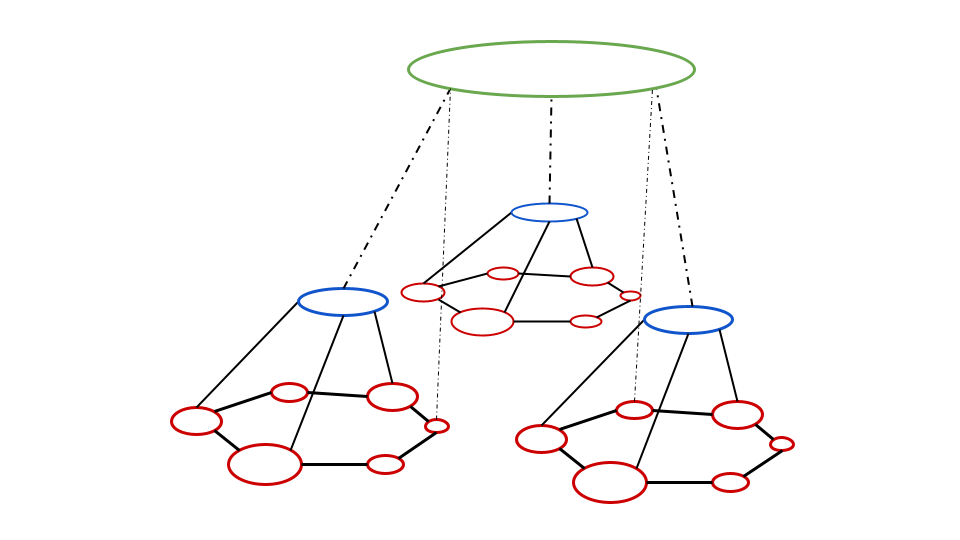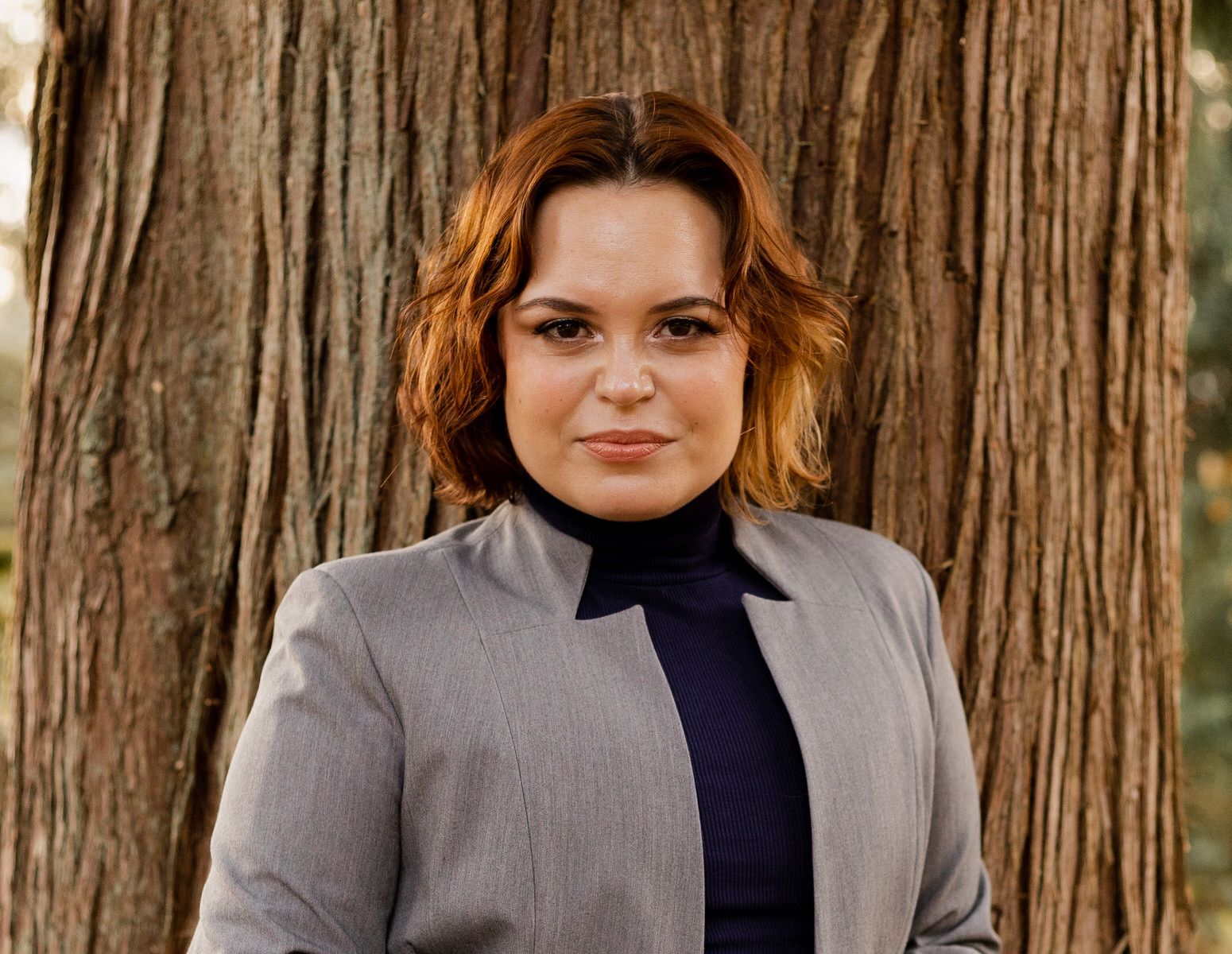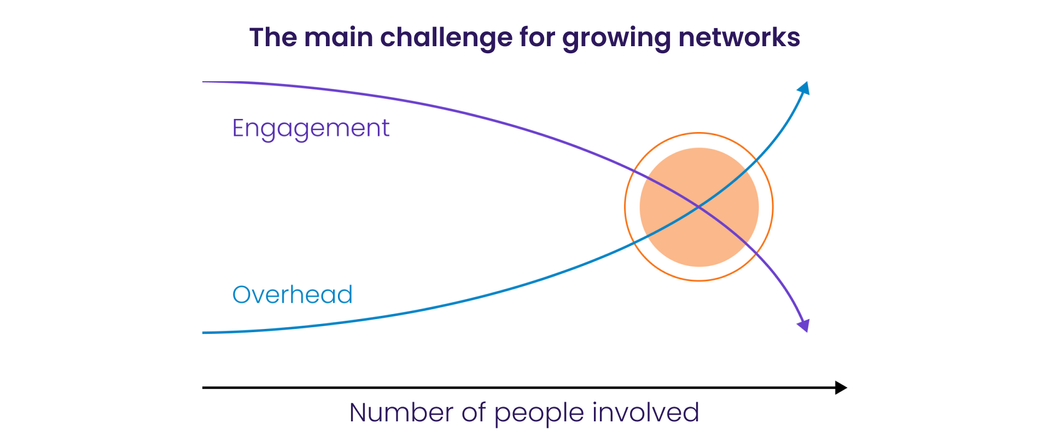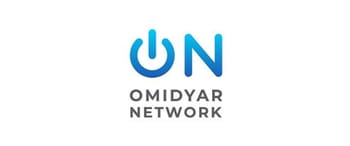Invigorated by our first event exploring network coordination, Clear the way: Engaging your network without burning out, we held a second panel on March 1st, 2023. This conversation dug into how to scale across rather than up through modeling key behaviors, creating repeatable, resilient processes and structures, leveraging fractal infrastructure, and supporting the cultivation of co-leadership along the way.
In this post, we reflect on our main takeaways, interwoven with insights from our research and experience. If this summary leaves you hungry for more, we've included the video below so you can dive deeper into the discussion.
Working out loud is vital
In our last post, we identified the value of this practice when engaging networks. When it comes to scaling your network, working out loud is absolutely imperative.
Key points
- Model the behavior you want others to follow
- Cultivate an attitude of agency
- Help people find their niche
So many things stop people from working out loud. Fear of mistakes or criticism, desires for approval or power, punitive authority structures. Many of our basic human pressures and cultural incentives create barriers to 'doing business in the open'. The prevalent framing for `work` focuses on individuals 'putting their heads down', doing their work, then revealing a polished (therefore very limiting) result. This leads to silos and duplication of effort, impeding organizational flexibility.
But we’re people. Learning by seeing, hearing, and otherwise sensing other people is one of the most instinctive things we do. To bring this into our workplace requires:
- centering generosity and relationships with others as part of your work,
- sharing ideas and drafts before you might feel 'ready',
- inviting input, regardless of whether you're an expert or novice in a subject,
- fostering curiosity and receptivity as you learn and encounter feedback, and
- reflecting out loud on your learning edge, individually and together.
When we work out loud, we're vulnerable; we can't hide behind a facade of perfect professionalism. But when leaders model this habit from a humble, curious, and trustworthy place, we make it okay to be ‘in process’, normalizing a growth mindset. This helps teams reframe weaknesses from flaws to opportunities for improvement, making the whole group stronger and wiser.
This way of working also helps build connections between people. We share stories. We take the perspective of others more easily, increasing empathy. We take abstract concepts and bring them into approachable narratives, increasing understanding. Working out loud can set the tone for a team or network and inspire others to take the risk and leap of faith that working more in the open requires. And, as Harold Jarche shows well, it can happen across formal work, close communities, and social networks.

Agency + Access = Action
In both teams and networks, working out loud helps give people access (in the form of tacit permission and/or information) to do what they need to be able to do. People can more easily see what’s needed and fill the void by stepping into action. Here are 3 steps you can take, along with modeling the behavior in your core teams, to create conditions for working out loud:
- Make clear what the current focus of your work together is.
- Help folks know who to talk with about what, and where to find things; for instance, curating a resource library.
- Above all, develop a shared habit of welcoming and listening to new participants.
Avoid the anti-pattern of requiring new folks to wander through a maze of links before getting their feet wet. Working out loud does not mean dumping all information on everyone – rather, tune into what's needed. Ask not only "how do we record the activity we do together?" but also, "how do we synthesize it?" and "what is the key information people need at any step?" Make sure somebody's available to listen to new people's journeys as they take initial steps into collaboration. This will give you insight into how the community is experienced by those on the outside edges, as they enter the front door; insights which are critical to sustaining the efficacy of your network over time.
Things start to fall apart when people [have to] ask the question "what am I supposed to do?" That's one of the warning signs - when there's a ton of confusion.
– Ana Jamborcic, Socialroots
Invest in the invisible
Once you’ve built a powerful network with a healthy culture, how do you show potential partners, funders, and other members what you’ve done?
Key points
- Take yourself out from the middle of participants' connections; they're the lifeblood of a network!
- Recognize and reward people doing the less visible work and use stories to relate that work to network impacts.
- Identify and celebrate 'interim goals' which indicate progress toward the (often emergent) impact goals.
A core power trap of the coordinator position can create a stumbling block for network growth. Sometimes, network leaders are reluctant to allow people access to other members. Being a hub of connection at the center of communication can be fun, and brings short-term power and voice. But networks where the convener remains in this bottleneck role can't thrive long-term. If you try to constrict people's connections with power-brokering, you'll lose trust. Offer your community generous access to each other, and the whole network grows more powerful. As we said in Turning Community Engagement Inside Out: "Your ability to be of service, of use to others, and to better connect people not only to your work, but to each other, makes a community willingly yours." When connection among people happens freely, community emerges, with all the unexpected benefits that can bring. All vibrant networks curate themselves. They establish explicit criteria about who the network is for, who it makes sense to include. The power-trap mistake is keeping that curation function in the hands of one person, or even a small core group. Establish membership boundaries around the edge, and network leaders no longer need to gatekeep every interaction within the network. Give away the power to connect within a network. Trust peoples’ ability to guide their own interactions.
As a network grows, coordinators often do a ton of work that goes unseen and undervalued: welcoming, orienting, writing newsletters, making introductions, sending the right link, troubleshooting or granting someone access to a tool. Coordination and connection work takes a lot of time, and often the 'deliverable' is invisible. People meet. Someone feels like they belong. Relational infrastructure gets built. But it's really hard to see (let alone prove) these resulting connections, and many times, people doing the work don't get - or take - credit. When networks begin to grow, the initial coordinator needs help. Often, those who step up also feel invisible or underappreciated as they support connection and coordination.
How can networks make this invisible work visible? As your network grows, make sure and regularly acknowledge people who step into welcoming, connecting, and coordinating other members. The outcome of coordination is new or stronger relationships, which aren't traditionally observed in evaluation methodologies. To make these more visible, ask for stories from members about what the network has meant to them. Our friends at Meli Bees did this, and discovered that their network made a connections that lead a cross-community seed swap, and the discovery of a new variety of bee! As people tell and retell these stories of a network through each exchange, they can collectively identify gaps. This helps in discovering where their time, passion and expertise best fit. Having 'interim goals' can help here too – as identified in the State of Network Evaluation report (2014). It can be powerful to celebrate the small wins which indicate you're on the way toward your desired impact. Connecting the relationships that are being built with the outcomes you aim for makes clear to more people that those impacts would not have happened without the invisible work of coordination.
Creating community ultimately is not creating [central] relationships one-on-one, but it's a weaving of all the relationships amongst the members themselves. So, to me, access in a community also means access to those relationships.
– Jessie Huang, Impact Circles
Have events and clarify replicable processes
When do you need to be the coordinator and what can you delegate or replace?
Key points
- Establish engagement pathways
- To make power explicit, make processes clear and available
- Clarify roles, especially a project management or strategy role, on every team
We've all seen it, and many of us have been part of it – a network grows with a rush of excitement, then suddenly engagement stalls and drops. The magic failed to spread. What happened? It's likely the original convener and coordinators were not able to replicate their functions. The network outgrew their ability to sense and listen and coordinate across it. People felt unheard, got frustrated, and left. Working out loud and investing in the invisible (and challenging!) work of care and coordination only go so far. Without patterns, processes, and clarity of purpose that can be adopted by those willing to help steward the network, the limit to network growth will always be tied to the attention available from the initial core coordinators.
Here's a way to help break through that constraint and help engaged people step up. Events (especially ones that feel like fun parties!) create a sense of movement and can bring new members in. But a growing network needs clear pathways of participation both for new members, and to support new leadership. One way to get started is to signpost the path for active members to host their own events. What techniques and processes can you offer? Tools? Logistical and publication support? What responsibilities and requirements come with this role or activity? At the end of any event:
- Ask, "who wants to do more?"
- Make a follow-up space to talk with those interested, and co-design a pathway to this kind of network leadership.
- Offer early feedback and celebrate participation; this builds the confidence of people who take initiative.
This engages new people in the core work of network stewardship and coordination by demystifying leadership. And, bonus! The process helps make power explicit, and so more likely to be healthy. Once you can offer this pathway for smaller, contained activities, like hosting a meetup, you'll begin to see how you can clarify other processes in the network, and gradually refine these so they're easy to follow. Ask what stays the same every time? What can change? Where are the boundaries? You can also use this process to help share culture patterns, to create memes. Learn to recognize when similarities are useful, and seek patterns that adapt to context.
When you look for project and strategy skills, what do you look for? Find the people who ask questions like, "what's the purpose of what we're doing?", "what's the timeline?", "how does this relate to other projects?" While these questions may feel like attacks or objections, often the people questioning these areas are the best allies you can have on a project. Success hinges on having people willing to ask and answer these types of questions. Celebrate their passion and invite them to take on some leadership. Call these people in to help you answer those questions. They will help do the hard work of research needed understand a goal deeply, and how it relates to other projects and larger goals. They'll identify realistic timelines and help move the team towards them. Usually, they don't mind supporting a team in getting to their goals, whether simply by getting updates and relaying the information across teams, or asking tough questions about the direction of the work. Look for people showing curiosity, who love to question assumptions, to gather data and input to make decisions. Prompt your co-leaders and other team members to recognize them as well. Projects that have people seeking out the answers in these roles are usually the only projects that last or get to where they are going. Being able to have many impactful projects is part of what helps networks scale.
[Making sure] your organizing model isn’t dependent on 1:1 meetings is crucial. It should not break when 500 people show up.
– Jay Carmona, Sematonic Strategies
Practice two-way information flows
In human networks, it is not a question of either top-down or bottom-up organizing, but of integrating understanding and knowledge across both strategic and tactical work
Key Points
- Continually clarify purpose and strategy
- Centralize coordination, decentralize power
- Success means you can leave and the community will sustain itself
People join networks to meet people, to find resources, to learn - for many reasons. But if nothing draws them in, they leave. As a network grows beyond the capacity of its originators to coordinate, a return to first principles can keep the energy from dispersing. Reground the purpose. Scaling can risk wiping out that 'core community' feeling, so having a clear articulation of purpose is vital. Communicate clearly and often what the network exists to do, why, how, and with who. Objectives may start to scatter as nodes develop their own calls to action. Repeating and clarifying the aim of the network helps new project leads connect their team's objectives to the wider purpose. It also becomes a clarion call that helps bring new people more quickly into stewardship roles. Revisit and get feedback on how you talk about what you are doing. Find out what the network members are most excited about, and reflect that in the stories you tell about your work. To work towards a self-organizing network, we all need to contribute to the ‘executive’ function of defining and re-visiting our shared purpose and strategy. Then the common enthusiasm can continue spread and engage the network.
But if this is all we do, we don't grow a vibrant network, we just grow the brand or name. It's useless to be good at storytelling if the network we support with those stories is not able to incorporate new people interested. To scale a network, structure information flows in a new way. What works with a small core team does not work with a wider network. If we don't address the pain of siloed information, keeping in sync across a network becomes impossible. Even across an organization, or across our core teams, staying in sync can be hard.
Double-linking, co-leadership, rotating stewardship, each discussed during our event on network engagement all help decentralize power. To coordinate, information needs to be accessible. It's why we have so many technologies for bringing information into a central place - phone books, bulletin boards, local newspapers. But what information? An open file of raw call notes is unlikely to be used by many participants. Reporting habits are hard. Summarizing and reflecting takes work, and we humans like to move onto the next new thing. But for information to flow coherently through a network, we need habits of distillation. Teams and teams of teams need regular updating habits within and across them. Only then do resources and insights across the various work and scales of the network become more available. So, when you make an intentional process for coordination, integrate a method which continually gives this power away (for example, can people add their events to your calendar?). If you centralize coordination while working to decentralize power, information can flow to the right places more easily.

To see if all of these efforts are taking shape, step out the door and see what happens. Look at what breaks, who's clear about what to do, who steps up into action. Lift them up when you return. Repeat until you can step away with nothing breaking. Celebrate!
Cure leadership woes with more leadership!
– Jay Carmona, Sematonic Strategies
To grow, networks need to integrate knowledge at scale
If we aim to learn from fractals, and scale across rather than up, what structures and processes help integrate and share knowledge across a growing network?
Key Points
- Fractal growth: leverage the power of similar patterns.
- Be sure people can navigate and participate where they choose.
- When communicating, look to see if there's a microcosm of the system in the room.
We all know how to organize in hierarchies of authority. They permeate many modern social structures, from families, to organizations, to governments. But when hierarchical structures grow, things slow down. Bureaucracy expands with them. In the face of an increasingly complex, connected world, we need more responsive organizations. To achieve this, people organize in networks of competence, echoing organizing principles of living systems: clear boundaries, decisions made at the right scale by those doing the work, and rapid feedback on work done and value created. Collective action networks (as in this history of black cooperatives) and impact networks working on our most pressing problems are at the forefront of this way of organizing. Networked organizing helps projects scale across rather than up. The aim is to create a dynamic network of networks rather than a giant (and often slow) uniform behemoth.

Beware, though, of going too flat, too fast. We're seeing what happens in the 'public square' model of social media. Lots of information creates learning opportunities, but with everyone talking to everyone else, there's also a lot of noise, confusion, and incentives for people with malicious or extractive intent. The same thing can happen in a single organization or network when 'work out loud' becomes 'talk with anyone, anytime'. For a network of any kind to thrive, you need clear boundaries that support healthy information flows. In a networked organization, this looks like “a dynamic two-way flow of power and authority, based on knowledge, trust, credibility, and a focus on results, enabled by interconnected people and technology” (from Jon Husband in 'Wirearchy').
Along with clear boundaries, networks also need to operate across various scales - for example, local, regional, national - to have an impact, to learn, to have the capacity to adapt to change. Human networks need at least three 'layers' or scales of participation. Work from Harold Jarche and Valdis Krebs on knowledge creation and organizational structures inform how we approach this in Socialroots, as does cell structure design. Clear boundaries and layers of scale help both learning and value creation emerge in networks. When human communication networks mimic biological cells, structures and processes at any layer are 'self-similar' - fractal. This not only helps information flow, but also makes it easier for people to jump in and participate. Using repeating patterns and dynamic boundaries in human networks creates healthy fractal structures. This results in freedom of movement, human agency, and comfort. If you notice a constraint or lack on any of these in your network, examine how you might adjust your structure. As people move from one to another layer of organizing, they should maintain a sense of orientation and clarity, not get confused or overwhelmed. When identifying replicable processes, find the patterns that most work to move people from new to active to stewardship. Make those similar at different scales, for (at least) three layers of the network.

If I'm coming from a city group, and walk into a county group, I have some understanding and similarity without anybody giving me instructions. What this creates is…this amazing freedom of movement and familiarity and comfort for humans. …And this is a structure that translates literally into human psychological safety. And it works almost every dang time.
– Jay Carmona, Sematonic Strategies
Finally, we can't talk about network structures without asking 'who's in the room?'. If the perspectives and knowledge informing your work come only from one viewpoint, or a limited range of experiences, no amount of sharing will close that gap. Whether setting up your network, or addressing any challenge, ask yourself and your collaborators, "Who needs to have input on this problem?", "Who has a stake in this?". Did you designate your network's clear boundaries with participation from everyone your network strives to serve? Do you have a clear way to get feedback? Be sure you have a 'microcosm of the system in the room'. Talk with people representing all the various stakeholders of your work. Ensure that those who would feel the impacts of what you are doing have a voice, a clear way to participate.
These approaches to organizing networks won't provide quick fixes. We all tend to get stuck in habits and biases from culturally dominant top-down attitudes and structures. As in any developmental journey, we'll take a step forward, fall, pick ourselves up, start again, and repeat.
But, with a keen focus on these basic principles:
- model and encourage working out loud
- strive to uncover and celebrate invisible work
- create clear boundaries and identify patterns to make fractal structures
we can help our networks learn to run and become powerful forces for change, adaptation, and learning.
Want to apply or suggest a network for early access to Socialroots? Get in touch if a network you're part of would be excited to try new infrastructure for networked organizing.
Event Details
VIDEO - Build Capacity: Scaling your network without burning out
(1 hr)
How can networks grow while remaining dynamic?
Do you have some engagement but aren't sure how to set up systems for growth? What does it mean to grow across as well as up? How do you expand capacity without burning yourself out along with your community?
We had a conversation with:
- Jessie Huang, founder of Impact Circles for early stage social entrepreneurs;
- Digital Organizer Jay Carmona of Sematonic Strategies who specializes in decentralized organizing, base building, training, organizing tech, and digital programs;
- Ana Jamborcic of Socialroots who will be talking about her work with digital organizing for the Bernie Sanders campaign;
- Facilitated by eco-socio-techno systems designer Naomi Joy Smith of Socialroots.
Our panel explored tricky questions around scaling without burnout. This is one you won't want to miss!
Learn more about Socialroots: sign up for our newsletter here.
About the panelists



Pictured from left to right: Jay Carmona, Jessie Huang, and Ana Jamborcic
Jay Carmona has worked on dozens of campaigns since 2008 in a career spanning multiple arenas of the American Left, including labor organizing, environmental justice, LGBT civil rights, faith-based work, and media justice. Before helping to roll out the world’s first campaigns to divest public pension funds from fossil fuels at 350.org, they were instrumental in coordinating major mobilizations in Washington DC. They’ve worked for two City Governments and on the Stop Rush campaign while working at Media Matters for America. Jay specializes in bringing together unlikely partners with a holistic approach to campaigning that includes a seamless blend of both online and offline grassroots organizing.
At the recently-founded consultancy, Sematonic Strategies, Jay supports creating decentralized, tech-supported community organizing networks and mediagenic online campaigns.
Jessie Huang is a community builder with 5-years experience building and scaling communities across the globe.
She is the founder of Impact Circles, a community of early-stage social entrepreneurs and social impact professionals that exists to help individual members grow and scale their collective impact. Over the past four years, it has spanned across Asia and US, serving 2,000+ social entrepreneurs annually through meetups, mentorship programs, and online peer groups. Meanwhile, Jessie works at Rippleworks Foundation where she helps to scale Leader Studio programs that aim to empower leaders of social ventures to gain critical skills and unlock their impact potential.
Jessie graduated from UC Berkeley with a Master’s Degree in Development Practice. She is passionate about supporting grassroots social innovators to generate solutions to their pressing challenges and create their own narratives.
Ana Jamborcic, Socialroots' own product strategist, has spent the last 7+ years studying how networked coalitions form and scale. Starting with the Bernie Sanders campaign, she worked as a product manager on the digital volunteer organizing platform Connect.BernieSanders.com and several other Get Out the Vote tools, like the Bernie Friend Finder that reached millions of people on Facebook, increasing the primary vote turnout by an estimated 60k votes. Ana has over 10 years of experience in software product strategy/management, M&A, and market analysis–with a proven track record in predicting market trends. Most recently she was the Principle Investigator for the NSF: Small Business Innovation Research Grant, which awarded over $1M non-dilutive funding to Wicked Co-op LCA (Socialroots) – the first cooperative organization to receive such a grant. Now her sole focus is to remove the barriers of effective self-organizing at scale via the Socialroots platform.
Want to apply or suggest a network for early access to Socialroots? Get in touch if a network you're part of would be excited to try new infrastructure for networked organizing.




